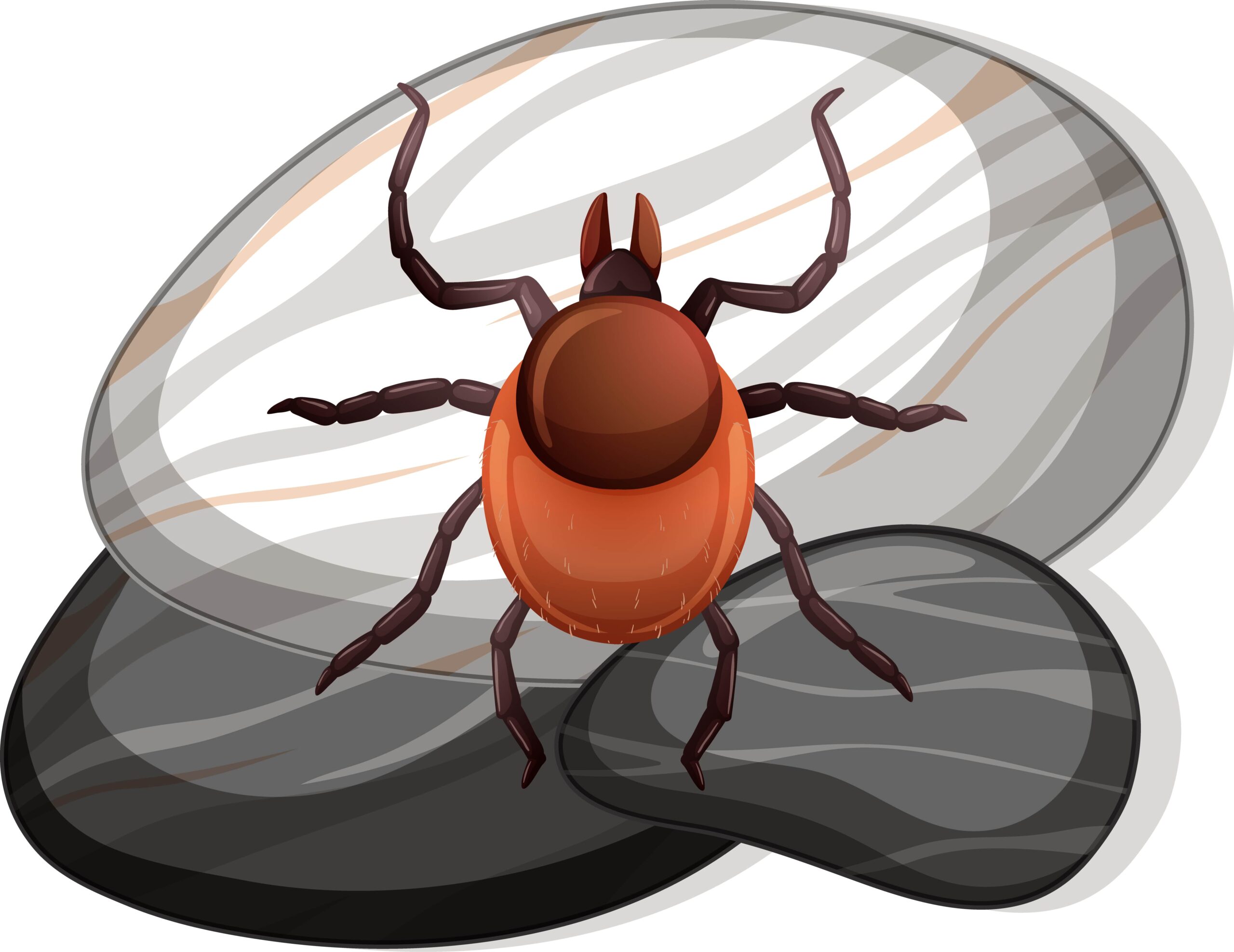Ticks on Dogs: How to Spot, Prevent, and Remove Them Easily
 Ever heard the saying, “Big things come in small packages?” Well, ticks are living proof of that! They love to gorge themselves on blood and hence are little animals that can cause great problems for your furry friend. But don’t worry, this article is here to explain all that you need to know about ticks in simple and even maybe entertaining (yes, entertainment even in bug talk) terms.
Ever heard the saying, “Big things come in small packages?” Well, ticks are living proof of that! They love to gorge themselves on blood and hence are little animals that can cause great problems for your furry friend. But don’t worry, this article is here to explain all that you need to know about ticks in simple and even maybe entertaining (yes, entertainment even in bug talk) terms.
What Are Ticks on Dogs and Why They Matter?

In the dog world, these villains called ticks happen to be one of the tiny blood-sucking parasites that depend on your furry friend for meals. Picture them as tenants who would leave the apartment and not even pay their rent, but still end up creating enormous damage. Pet owners should not only maintain a clean atmosphere but also adopt ways that would protect their pets. They find a nice spot on that host, bite into it, attach it to suck on that blood for food.
It gets more interesting with these sneaky ones: They first introduce the skin to an anaesthetic so that the bite is not felt by your pet. Now, they find it more rewarding, while it is causing trouble in what it does.
Why Are Ticks Dangerous?

Ticks, as such, cannot be irritating; yet they pose a threat to your dog as their bites can provide the portal by which several diseases can invade a dog’s body. Some of these diseases pose serious risks and can even cause death. This is what a tick can give:
Diseases spread by ticks
Ticks act like dirty needles that can house harmful germs. As they bite, they pass these germs along to your dog. Some of the common tick-borne illnesses include:
- Babesiosis: Fever and pale gums weakness. More like the flu, but scarier.
- Ehrlichiosis: It can lead to fever and weight loss, and may sometimes trigger bleeding problems.
- Lyme Disease: Fever, swollen joints, and lethargy. It’s less common in Indi,a but still a risk.
- Anaplasmosis: Another nasty infection with symptoms like fever and joint pain.
- Tick Paralysis: Some ticks release toxins that can make your dog’s legs weak or even paralysed.
Diseases contracted by ticks include Lyme disease, ehrlichiosis, and anaplasmosis, which are harmful not only to dogs, but to humans as well.. For example, the expansion of tick populations carrying Lyme disease in North Carolina, as reported by the UNC Gillings School of Global Public Health, highlights the growing geographic spread of these parasites. Data from routine dog check ups have been used to track this shift, providing valuable insights into how tick-borne diseases are spreading.
(Source: Gillings School of Global Public Health )
Causes Skin Problems
Ongoing scratching by your dog probably indicates more than just an itch. Tick bites can cause skin irritation characterised by a red and sore region.
Weak the Health of Your Dog
The tick is not only a parasite; it is a very greedy parasite. It sucks blood from your dog, and a heavy infestation may lead to anaemia, causing weakness and tiredness.
How to Detect Ticks on Dogs?

So, how can you identify ticks on your dog? Here are some signs:
- Visible Ticks: Check places like under the collar, between the toes, and behind the ears: these are top tick spots.
- Excessive scratching: The scratching of your dog seems excessive time to investigate it.
- Red or Irritated Skin: Ticks make bite marks that can appear red and inflamed.
- Fever or tiredness: Sick or sleepy, your pooch may be suffering from tick-borne diseases.
- Lymphadenopathy: Infection from a tick leads to this condition.
Top Tips to Prevent Ticks on Dogs

Prevention is better than cure and when it comes to ticks, it’s true more than ever. This is how to prevent ticks:
1. Regular Grooming
Brush your dog’s coat often, especially after walks. This can help you spot ticks before they settle in. For professional care, consider dog grooming or pet grooming services near you.
2. Use Tick Prevention Products
There are plenty of options, from spot-on treatments to tick collars. Additional advice should come from your vet on which product would benefit your dog most. Remember that these are not miracle metals; you should still check your dog frequently.
3. Keep Your Home Tidy
Ticks love to dwell in dark and moist places; therefore, cleaning and vacuuming often at home to ensure that cracks in the walls or floors of the house are sealed reduces their number.
4. Yard Maintenance
If you own a yard, keep the grass mowed short and clear out any piles of leaves nearby. Ticks love hiding in overgrown areas.
5. Regular Vet Visits
Your veterinarian is the best ally against Ticks. Adult tick checks can be a great benefit, as they may prevent conditions from developing in the first place. Regular checkups with a veterinary doctor or vet near you for dogs can help prevent tick-borne diseases.
If you find a tick, what are the steps you should follow?
Alright, so you decided to inspect your dog for ticks. Don’t stress about it at all! Here are the steps to take:
- Remove the Tick with Care: Use a pair of tweezers or a tool especially meant for ticks..Use fine-tipped tweezers to grab the tick as close to your dog’s skin as possible and then pull gently and firmly upwards without twisting.Then pull upward steadily and gently without twisting.Avoid turning / twisting / squeezing as this could lead to parts being left behind.
- Clean the Area: Once you sanitise everything, clean the area around the bite with an antiseptic.
- Keep the Tick: You read that correctly. Afterward, it is advised that the ticks are kept in a sealed container, perhaps a jar, where they can be identified later on.
- Watch Your Dog: Be observant about your pet regarding indications of illness. Always call a vet when you notice anything odd.
Common Myths About Ticks on Dogs
Busting some of the popular tick myths:
- Myth: Ticks are found only in rural areas.
Truth: Ticks are everywhere, including in cities.
- Myth: Oil or alcohol can kill ticks by smothering them.
Truth: This may irritate the tick and cause it to release harmful bacteria into your dog’s bloodstream.
- Myth: Ticks are easy to find.
Truth: Some of those ticks are the size of a poppy seed, so tiny that they are true masters of hide-and-seek.
Why Ticks Are a Family Problem
This is a fun fact (or not-so-fun at all): ticks can also bite humans. Therefore, it’s not about the health of your dog puppies but your family’s health. Some diseases associated with ticks, like Lyme disease, are transmissible from pets to humans.
Just Being Aware
Recognizing tick hazards is already half the battle. Armed with information, you can protect your dog and all members of the family from those little troublemakers. At Kansas State University, research is geared toward the generation of vaccines for tick-borne diseases like Ehrlichiosis and Anaplasmosis leading to symptoms in both dogs and humans such as fever, weakness, and loss of appetite.
Their ongoing studies have received significant funding, emphasizing the importance of understanding tick behaviour and finding effective control strategies.
(Source: Kansas State University )
Conclusion
Although tiny, ticks can be of great harm. Even alertness towards these adventurous parasites could save your pooch from being exposed to their worseness. Repelling these pests coincidentally will be quite simple preventive measures.
Keep combing Holmes Park’s ticks up-front with your grooming and tick-prevention work. Plus, always be quick to consult your vet.
For expert advice and a range of pet care solutions, check out Petsfolio. Your dog deserves the best care, and with the right steps, you can keep those tails wagging tick-free!
Reference:
Send us a Message
Enjoy this post?
Check out some more great articles and other content.
When you walk your dog, you are engaging in constant non-verbal communication through...
Read The ArticleDog grooming myths in India are still widely believed, and this affects how pet paren...
Read The ArticleWhen a dog stops eating, it is one of the worst things that can happen to any pet own...
Read The Article
 Download App
Download App Join
Join Support
Support












